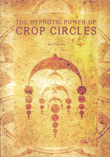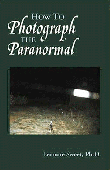The ever-growing library of crop circle-related books has expanded yet further with four recent new entries, here reviewed by GEOFF HINTON, ALLAN BROWN and CAROL PEDERSEN…
1) CROP CIRCLES, by Lucy Pringle
This is the second book from long-time researcher Lucy Pringle, and it is very much a compact distillation of her previous work from a few years back, ‘Crop Circles: The Greatest Mystery of Modern Times’.
Published as one of a range of ‘Pitkin guides’ to various aspects of England’s heritage, at just £3.50 this softcover 32-page stapled booklet, simply entitled ‘Crop Circles’, represents very good value for money, every page in full colour. One by one it ticks off all the bases one would expect a guide book to cover (theories, sightings, are they all man-made?, etc.). Lucy’s photographs of striking formations are featured throughout, but don’t cover anything before 1995, so the early pictograms are missing, which is perhaps a shame.
However, Lucy has managed to imprint what could have been just a basic hack-job with very much her own style and emphasis, and thus her work with circular effects on humans and animals is prominently featured. Lucy’s personal areas of interest are made clear throughout, down to little warning symbols being included here and there, stating “Do not enter a crop circle if you are pregnant” and the suchlike, which might confuse casual readers, but do add to the book’s pleasing eccentricity. Headers to pages are perhaps more imaginatively titled than this kind of thing would usually warrant, too, indicating a dedication beyond the call of duty. Photos of people and objects, like eye-witnesses to circles forming, for instance, are included, as is a hilarious shot of a cat being carried around in a bag (illustrating ‘Effects on Animals’…).
The format of the book is in wide landscape mode, which makes it a bit floppy and is perhaps a bit awkward for the average shelf, but it does allow an easy and uncluttered layout, and there is an attractive front cover. The back cover says something of the imagination which has gone in on the part of the designers, being simply a striking overhead zoom into the centre of a particularly complex formation, with no explanatory text whatsoever, just the bar code.
All in all, more than one would normally expect from this kind of basic-guide venture.
AVAILABLE FROM:
Jarrold Publishing, Healey House, Dene Road, Andover, Hampshire, SP10 2AA, UK
E-mail: heritagesales@jarrold-publishing.co.uk
Web: www.britguides.com
Tel: +44 (0) 1264 409206
2) CROP CIRCLE QUILL-DOS, by Joanna Emery, illustrated by Kevin Cook
To the best of anyone’s knowledge, the only previously published crop circle book for children was Dick King-Smith’s ‘Harriet’s Hare’ in the early 90s, the tale of a magic hare appearing in a crop circle.
Canadian circle researcher and author Joanna Emery has now come up with her own cerealogical tale for children. A ‘quill-do’, for non-Canadians, is a porcupine’s swirled coat (as opposed to a hair-do). Inspired by the accounts of a flattened porcupine genuinely found in a Canadian circle from 1993, Joanna has fashioned a less fatal take on the original inspiration.
The simple tale of the friendship between porcupine Miss Penelope, who tells her story of being unexpectedly squashed down one night by a descending crop circle energy, complete with balls of light, to her rabbit friend, er, Mrs Bunny, who then gets her ears swirled, is a delightful and literally fluffy (or spiky?) diversion from the usual complexities of the croppie world.
With its end-papers showing photos of actual crop circles, together with a brief explanation of the phenomenon, clearly the book hopes to inspire interest from very young readers towards the real thing, and there’s no reason why it shouldn’t.
Very cute, and nicely produced with charming colour illustrations, this is a unique and refreshing addition to any circular library.
AVAILABLE FROM:
Boo Bed Books, 22-11 Pirie Drive, Dundas, Ontario, Canada, L9H 6Z6
E-mail: joannaemery@hotmail.com
Web: www.joannaemery.com
Tel: 905 627 2472
Reviews by GEOFF HINTON
--------------------
3) THE HYPNOTIC POWER OF CROP CIRCLES, by Bert Janssen
Bert Janssen has long been a stalwart of crop circle research, and many of you have probably watched one of his videos or seen one of his presentations on the crop circles or related subjects. He has, indeed, won several awards for his video productions. Bert, however, has another very important feather to his bow, and that is the great contribution he has made to the furtherance of our understanding and appreciation of crop circle geometry.
To anyone who has spent any time with a compass and pencil attempting to reconstruct a crop circle pattern on paper, they cannot but fail to have felt the deep satisfaction that occurs when insight is gained from a particular nuance or detail of how the design hangs together. It was from just such an initiatory experience that this book emerged, and it essentially charts Bert's reflections and insights, gained from almost a decade of intensive study of crop circle design and the beautiful visual harmonies they contain.
It is interesting to observe how different geometers have developed such individual and idiosyncratic methods of working, despite the apparent unequivocal nature of geometric design. You can immediately tell a Nick Kollerstrom analysis from a John Martineau or a Zeff Damen analysis from one of mine, and Bert's style is equally unique.
Early on in his investigations, Bert noticed a particular triune structure that seemed to underpin a plethora of different crop formations, and much of the book is taken up with a discussion of how this construction works. He draws from a wide range of formations, and briefly outlines some of the details of early crop circle geometry, explaining how the emphasis has gradually shifted from 'external'-type geometry into the more mandala-like 'internal'-based geometry that we primarily see in today's formations. He also discusses landscape alignments and how these shapes are often geomantically embedded into the surrounding countryside.
The book is well-illustrated with simple, easy to follow diagrams that enable the complete novice and the mathematically inept (like myself) to follow the construction sequences with ease. However, it is important to point out that there is more text and friendly banter in this book than there is geometry, so it is an enjoyable read, even if the thought of immersing yourself in the details of crop circle design feels rather overwhelming. Bert leads the reader effortlessly through the subject, and points to many interesting people and events along the way.
My only reservation with the content lies with the conclusion drawn from his work on the underlying construction lines that are sometimes found marked out under the lay of certain crop circles. Bert has done some really important work on the possible nature of these lines and concludes from examining them that if one were working purely geometrically, then certain steps necessary to successfully arriving at the finished design are missing on the ground, despite others being present. This then, by default, appears to rule out the notion that the formation was manually constructed, at least in a logical, sequential and geometrical fashion, as you would if you were drawing it out on paper just using a compass. However, technically, I feel his conclusion is not necessarily inevitable, and there are ways, theoretically at least, that could circumvent some of the problems that Bert outlines.
This caveat aside, I feel this to be an essential book for anyone who wants to acquaint themselves with what I maintain to be the most nourishing aspect of the crop circle phenomenon. Bert is a congenial host and leads us through a series of astonishing insights and points us towards the delightful fruits of a sublime designer at work.
The book is well laid out and has sixteen colour pages crammed with aerial photos of many of the formations discussed in the text. The book has a handsome cover and I feel this will become an indispensable addition to many of your already heaving crop circle libraries. I thoroughly recommend getting hold of a copy, and cannot think of a better way of spending the cold winter months ahead than working through and recreating the many formations that Bert expertly dissects and analyses for us. I imagine that next summer we're going to see a lot more budding crop circle geometers out and about, proudly strutting their stuff, thanks to the indefatigable enthusiasm and expert guidance of Bert Janssen. Good work, Sir!
AVAILABLE FROM:
Frontier Publishing and Adventures Unlimited Press, PO Box 48, 1600 AA, Enkhuizen, The Netherlands
E-mail: fp@fsf.nl
Web: www.fsf.nl
Tel: +31 (0) 228 324076
Review by ALLAN BROWN
--------------------
4) HOW TO PHOTOGRAPH THE PARANORMAL, by Lenore Sweet
A new book on the topic of the balls-of-light or orb phenomenon is being published. It is titled ‘How to Photograph the Paranormal’ and is written by Lenore Sweet Ph.D. from Oregon. In it she describes her personal journey, recording different types of light mysteries on camera and includes many super clear colour and black and white unusual photographs taken in her quest. The photos are as excellent as the text. There is an entire chapter on crop circles, with comments on the Forest Grove, Oregon circle of 2002 and W C Levengood's work [plant analysis]. There is also an endorsement on the back cover from Levengood.
This book tells you the author's best tips for doing your own photography, which camera to use, where orbs are more easily captured on film and who might have more success with this goal. In addition there are sections on the history of the subject, how religion enters in, and the different names and categories of these lights. One interesting observation is that "The orbs rather than the photographer appear to control when they allow themselves to be photographed." Other intriguing remarks offer the view that our own unconscious minds might be somehow producing this phenomenon. Where they are found might be less important than who is taking the photo or who they are taking a photo of. The more you seek them the more you will be able to see them.
The almost 20 chapters include every aspect possible to imagine in a balls-of-light detective story even though what they really mean remains a puzzle. To preview the book go to:
www.photographingtheparanormal.com
To pre-order your copy at the low price of $11.53 (regular price $16.95) go to www.amazon.com. The publication date is January of 2005.
Review by CAROL PEDERSEN

'Crop Circles', by Lucy Pringle |

'Crop Circle Quill-Dos', by Joanna Emery |

'The Hypnotic Power of Crop Circles', by Bert Janssen |

'How to Photograph the Paranormal', by Lenore Sweet |